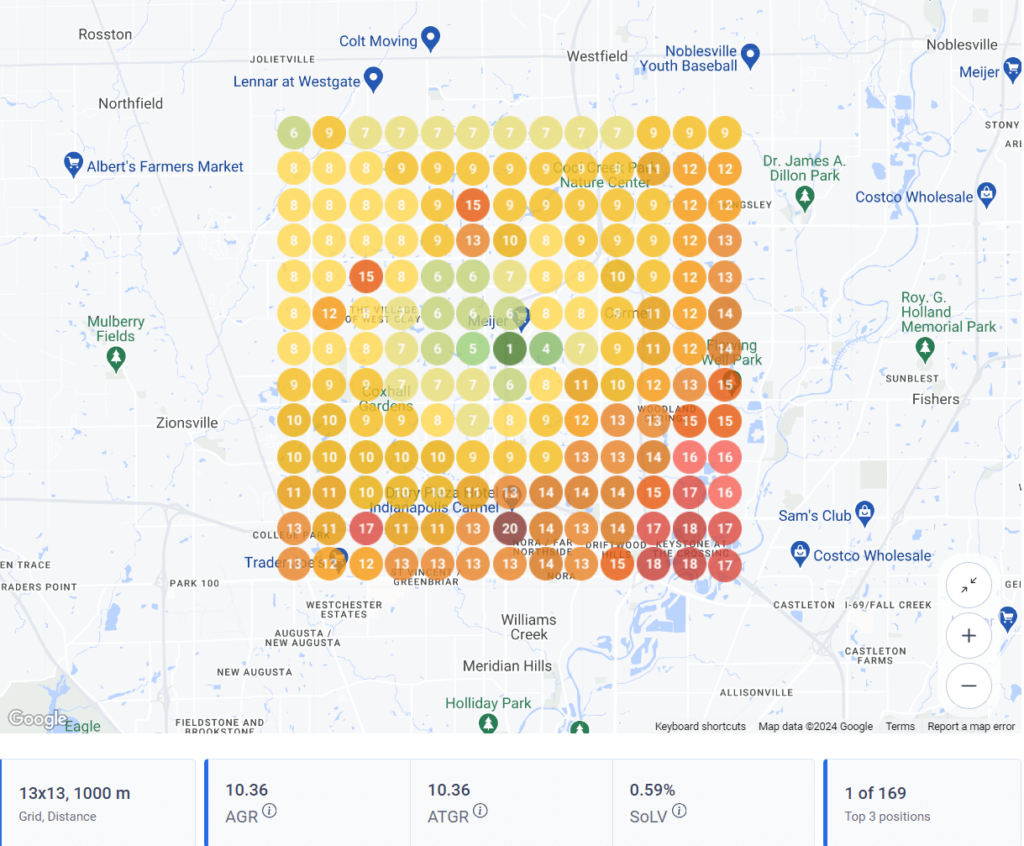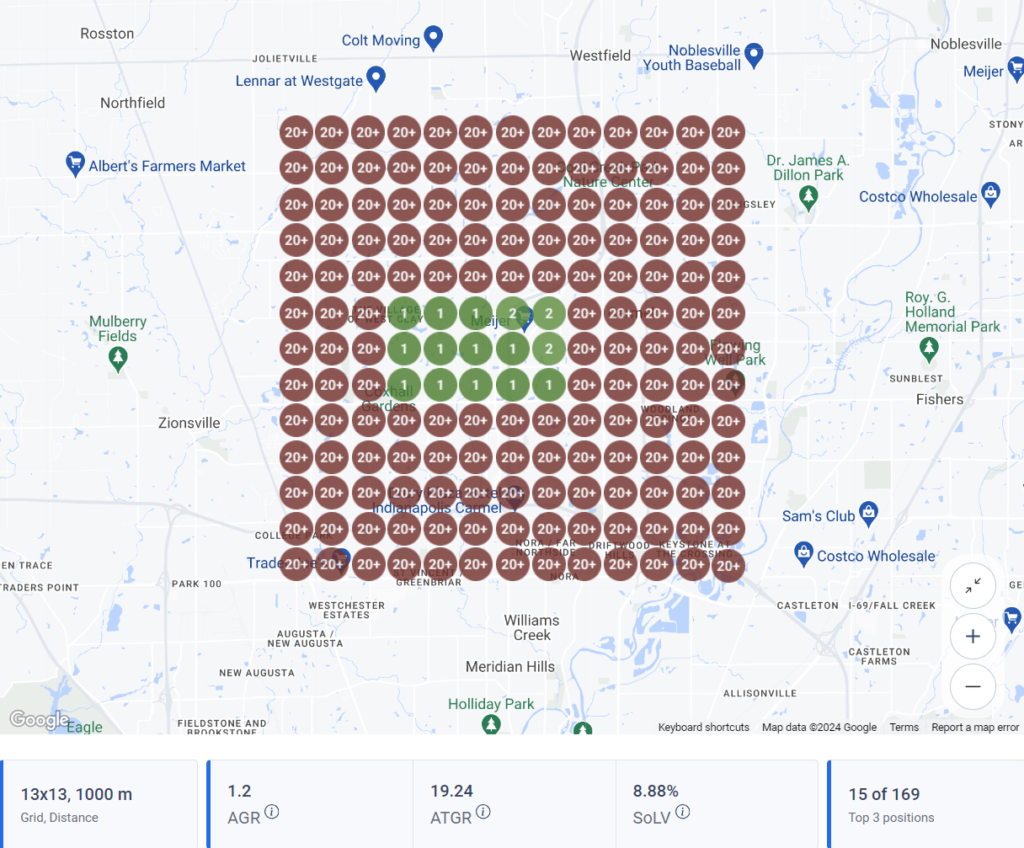Explaining Average Grid Rank (AGR/ATGR) Tracking
The world of search engine optimization (SEO) thrives on data-driven insights. Average Grid Ranking tracking in GeoGrids are powerful tools to empower your work to dominate search results.
Within GeoGrid platforms like TrackRight, we see these metrics frequently being paired with each other:
AGR – Average Grid Rank: Average ranking across the geogrid, where only nodes at a value of 20 or less are considered.
ATGR – Average Total Grid Rank: Average ranking across the geogrid, where all nodes are considered. A value of 21 will be assigned for nodes that rank over position 20.
Understanding The Significance of a GeoGrid’s AGR and ATGR Metrics
Average grid ranking provides a more comprehensive and accurate picture of your website’s search engine performance than focusing on individual keyword rankings alone.
It is a critical metric that measures your business’s average local search ranking across multiple locations within a designated area. It’s vital in today’s digital world where 93% of consumers use online searches to find a local business, and businesses ranking in the top 3 positions receive the most clicks.
AGR or ATGR can also be used to monitor movements on a bulk level. Since these are able to show us a clearer reading on the local visibility provided by a GBP’s local rankings, they can be used within software or automations to potentially alert us to which of an Agency’s GBPs are losing rankings, staying stagnant, or increasing the most.
These metrics, when applied in such a way, can be used as an alternative to having to tediously look through geogrid snapshots across a period of time for each and every single keyword you are tracking for each of your clients.
Reading The Metrics
In this first image, we can see a result where the AGR and the ATGR are the same.

In this second image, we can see what it looks like when you have a gap between the two metrics.

For a seasoned local SEO marketer, the second image here would obviously stick out as a bit of an anomaly. So we can see how a gap in AGR and ATGR can signal irregularities within a given geogrid.
Otherwise, the increase or decrease in either metric (or even the rate at which it increases or decreases) can be used to get an overall readout of progress and performance across an entire portfolio of Google Business Profiles. Allowing one to get a pulse on where they are across all campaigns they might be overseeing.
Effective Strategies For Improving Average Grid Ranking (AGR)
TrackRight plays a huge role in optimizing your local visibility:
- Precision Tracking: TrackRight breaks down a geographical area into a grid and constantly monitors your business’s ranking position within each grid square. This granular data goes far beyond simple location-based ranking.
- Actionable Insights: TrackRight analyzes this comprehensive data to identify patterns, pinpointing where you excel and where you may be falling behind competitors. You gain tailored insights for targeted optimization.
Using data from TrackRight allows you to better measure your performance and show both gains and losses across Website ranks as well as Google Business Profile ranks. For SEO agencies, this is a crucial way to track success and show off results. Reach out to us if you have any other questions about using our GeoGrid features.